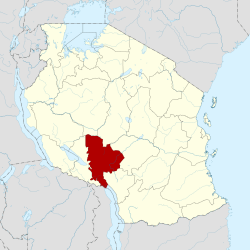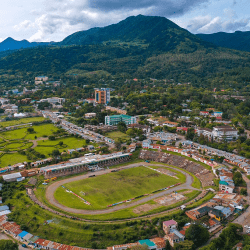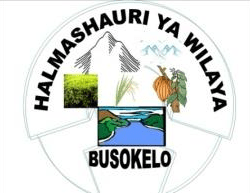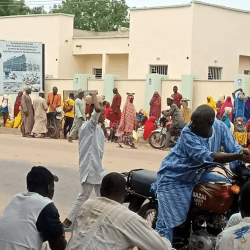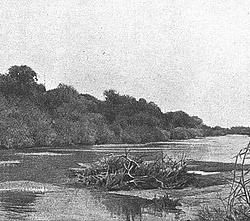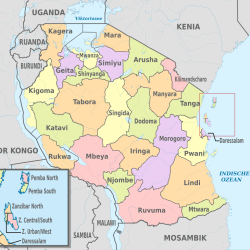Agriculture dominates the livelihood and economic performance of Mbeya Region
Cattle Husbandry, Dairy cattle’s rearing is highly practised in Rungwe District with 56 percent of the total cattle population in the region

Sheeps

Cocoa Plantations in Rungwe and Kyela Districts

Agriculture is the back born of Mbeya residents of which about 80.4 percent of the residents depend on it as their main source of livelihood. Livestock keeping is the second most predominant economic activity in the Region.
Agriculture contributes about 69 percent of the Region’s GDP.Weather condition continues to be the major determinant of agriculture performance in the Region. The Region has about 3,810,441 hectares (59.8 percent of the total Regional land area) suitable for cultivation of both cash and food crops. The major food crops grown in the Region are maize, paddy, sorghum, beans, round potatoes, sweet potatoes, cassava, bananas, groundnuts, simsim, fruits and vegetables. Main cash crops are coffee, tea, tobacco, pyrethrum, wheat, sunflower, and palm oil.
Agriculture and Livestock: The Situation
Agriculture dominates the livelihood and economic performance of Mbeya Region. The sector contributes about 40 percent to the regional economy and employs about 80 percent of the working population in the Region. Agriculture is dominantly peasantry farming and a small number of commercial scales farming of tea in Rungwe, coffee in Mbozi and rice in Mbarali Districts.
Mbeya is one of the six regions earmarked nationally to produce surplus food for internal consumption and for export. The arable land has high potential in the production of paddy, coffee, tea, pyrethrum, cocoa, pineapples, tobacco, bananas, tomatoes, onions, Irish potatoes, wheat, sunflower, groundnuts, millet, beans, sorghum, cassava, vegetables and non-traditional agricultural crops such as fresh fruits, vegetables, flowers and herbal plants.
There are two types of agriculture practised in Mbeya region:
(i) Rain Fed Crop Agriculture
Traditionally, the farmers in Mbeya Region have been dependent on rain for their agricultural activities. However the region is taking initiative measures to improve production by increasing the use of fertilizers, irrigation and mechanization.
(ii) Irrigation Agriculture
Mbeya region is estimated to have 90,190 hectares suitable for irrigation. Out of that, 52,091 hectares are under irrigation, 24,579 hectares are developed schemes and 27,440 hectares are under traditionally irrigated schemes. Rice is the pre dominant crop grown through irrigation. Water for irrigation is taped from various perennial rivers by gravity.
Agro based processing and marketing infrastructure:
a) Processing of coffee, tea, cocoa, cashew-nuts, cereal, fruits and vegetables.
b) Extracting of oil seeds.
c) Production and Supply of packaging materials, agricultural inputs,
d) Production and supply of packaging equipment and materials
e) Application of e-commerce and greater use of the Internet
f) Installation of roasting and packing facilities in partnership with the local entrepreneurs
g) Supply of production inputs.
Livestock Keeping
Livestock keeping is the second most predominant economic activity in the region. The sector plays a significant role in the rural economy of Mbeya region and has great potential for increased production. The region has favourable climatic conditions for livestock keeping, particularly, cattle, goats and sheep. Dairy cattle’s rearing is highly practised in Rungwe District with 56 percent of the total cattle population in the region. Other livestock kept include pigs, chicken, ducks and pigeons.
There are 16 privately owned ranches under Usangu Ranch Association in Mbarali District which have many opportunities for joint venture developments.
Although agriculture is the main economic activity in the Region, it faces a number of bottlenecks such as:
– Dependence on under-developed smallholder primary agricultural production, characterised by the use of hand tools,
– Few support mechanisms of agriculture extension services.
– Significant food crop loss (both pre- and post –harvest),
– Inadequate food storage and preservation that results in significant commodity price fluctuation,
– High price of farm inputs and difficulties in accessing credits by peasant farmers and,
– Unreliable market outlets and poor transport network for the haulage of the agricultural produce.
